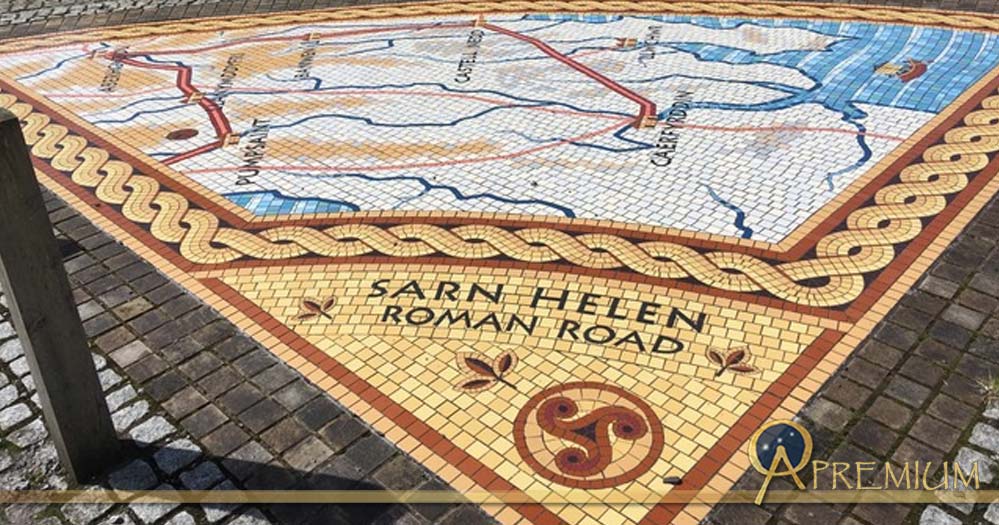Following ‘Sarn Helen’, an Ancient Roman Network of Roads, Across Wales
Looking at a detailed roadmap of Wales, one will notice an unusual feature; alongside, and sometimes between the expected highways and scenic byways is a broken assortment of dotted lines identified as ‘Sarn Helen’. These splintered lines are scattered across western Wales, from near Caernarfon in the north to near Carmarthen in the south, meandering through moorland and isolated valleys, climbing hills and skirting mountains. Bits and pieces of ‘Sarn Helen’ pass by intriguing locations, including numerous standing stones and megalithic sites, an ancient gold mine, Roman fortifications, and important ecclesiastic centres.

Map of ‘Sarn Helen’ crisscrossing Wales. (Image courtesy of the author)
A Network of Roman Roads
‘Sarn Helen’ is the name of the network of ancient Roman roads that linked Imperial settlements across Wales. Short stretches of these roads can still be seen and traveled upon, although most have been obliterated over the millennia. Some of ‘Sarn Helen’ now lies beneath bustling modern roadways and railroad tracks; other parts are buried beneath the crops in farmers’ fields. But in isolated spots, far from modern development, it is still possible to walk upon the ancient Roman paving stones.
The origin of ‘Sarn Helen’ is a mixture of history and myth, a kind of palimpsest that, like the roads themselves, has been covered over and over, leaving intriguing, faint hints of the past. ‘ Sarn’ is Welsh for causeway: a constructed road, for which the Romans were famous. This doesn’t mean, however, that the Romans originated the route, although they may have paved it. But who was Helen? A Welsh chieftain’s daughter who married Magnus Maximus, a Roman emperor? A Christian saint? Or was she Elen of the Ways, a Northern European reindeer-headed goddess?
Elen and Magnus Maximus
Over the millennia, a number of mythic, semi-mythic, and historic Helens and Elens have been conflated into one. The most likely candidate for ‘Helen’ is Elen Luyddog, which translates from Welsh as Elen of the Hosts. This Elen appears in the medieval Welsh epic The Mabinogi, where she plays a central role in The Dream of Macsen Wledig. Macsen Wledig (Welsh for Magnus Maximus, a real-life, 4th century Roman emperor from 383 – 388 AD) dreams of a remarkable woman: “It was no easier to look or gaze upon her than to look at the sun when it is fiercest and fairest, on account of her beauty.”
Like this Preview and want to read on? You can! JOIN US THERE ( with easy, instant access ) and see what you’re missing!! All Premium articles are available in full, with immediate access.
For the price of a cup of coffee, you get this and all the other great benefits at Ancient Origins Premium. And - each time you support AO Premium, you support independent thought and writing.
Elyn Aviva Ph.D., M.Div., is an independent researcher specializing in sacred sites, powerful places, comparative religion, and pilgrimage. She is author of numerous articles and over a dozen books, including Following the Milky Way, now in its second edition, which explores the meaning of pilgrimage in detail, and delves deeply into the esoteric symbols and pre-Christian shrines that lie hidden within the Way. Her latest book, The Question: A Magical Fable, has just been released. | See more at PilgrimsProcess.com and PowerfulPlaces.com
Top Image: Pavement mosaics showing ‘Sarn Helen’ routes in Wales, one of which lies between the two mosaics. (Image courtesy of the author)
By Elyn Aviva




















